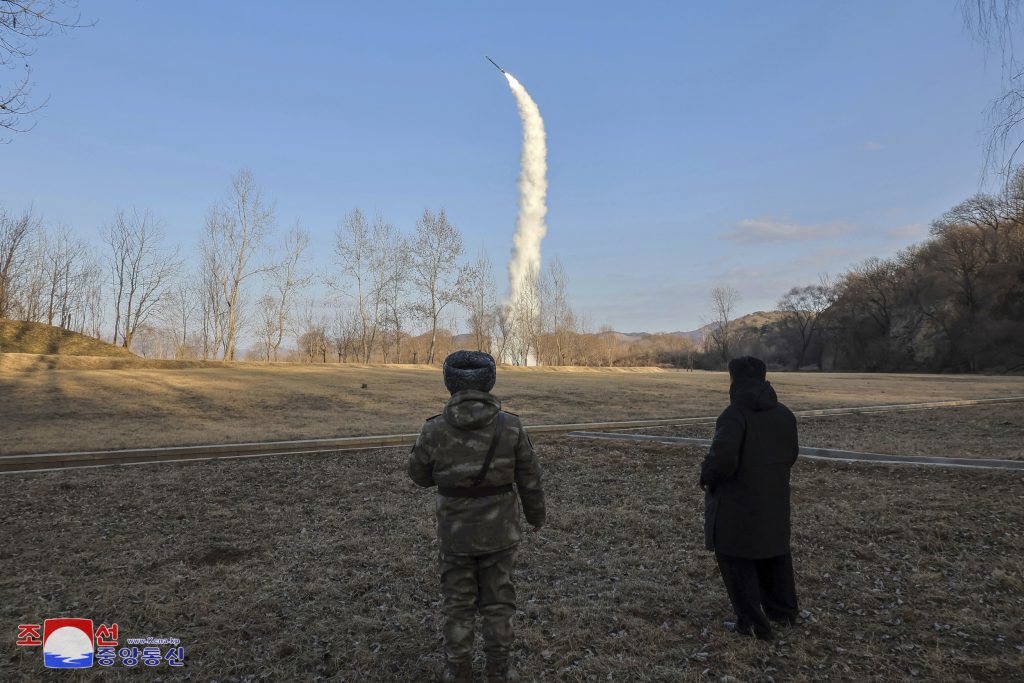North Korea’s Strategic Cruise Missile Test: A Deep Dive into Pyongyang’s Nuclear Ambitions
North Korea’s recent test of "sea (underwater)-to-surface strategic cruise guided weapons" marks a significant development in the country’s ongoing pursuit of nuclear capabilities. This test, the first publicized weapons test since President Trump’s inauguration, underscores Pyongyang’s unwavering commitment to enhancing its military prowess. The timing of the test, following U.S. reconnaissance missions and joint aerial war games with South Korea, suggests a calculated response to perceived threats. While the test involved multiple cruise missiles launched from an inland area towards the Yellow Sea, North Korea maintains that it did not impact the security of neighboring nations.
The Korean Central News Agency (KCNA), North Korea’s state-run media outlet, provided details of the test, emphasizing its role in strengthening the nation’s defense and strategic deterrence. According to the KCNA, the missiles precisely hit their targets after traversing elliptical and figure-eight flight paths spanning 932 miles. The published photos depict a missile in flight over an undisclosed body of water and Kim Jong Un overseeing the launch. South Korean military sources confirmed the test, adding that multiple cruise missiles were involved. Speculation arises regarding the use of a vertical cold-launch system, typically associated with submarine and ship-based weaponry, which ejects the missile before igniting it mid-air. This system enhances the missile’s launch flexibility and survivability.
This recent test follows a pattern of North Korean military advancements and provocative actions. It underscores Pyongyang’s determination to develop and showcase its nuclear and missile capabilities, likely driven by a desire to deter potential adversaries and secure a stronger position in regional and global affairs. The test also serves as a reminder of the ongoing tensions on the Korean Peninsula and the challenges in achieving denuclearization.
The test has elicited varied responses. North Korea asserts that it acts responsibly to maintain peace and stability, while emphasizing its growing military strength. Concerns remain within the international community regarding North Korea’s nuclear ambitions and the potential for regional instability. The U.S. Defense Secretary, prior to his confirmation hearing, acknowledged North Korea’s nuclear status, missile range advancements, and cyber capabilities as threats to regional and global stability.
The potential implications of this test are multifaceted. Firstly, it may trigger further reactions from the U.S. and its allies, potentially leading to increased military exercises or sanctions. Secondly, it could complicate diplomatic efforts to denuclearize North Korea, as the regime demonstrates its continued commitment to these weapons programs. Thirdly, it fuels regional anxieties, particularly in South Korea and Japan, which are within range of North Korean missiles.
North Korea’s persistent pursuit of nuclear capabilities raises concerns about the country’s ultimate intentions. While Pyongyang claims its actions are defensive, the development of increasingly sophisticated weaponry suggests a desire for offensive capabilities. The international community remains divided on how best to address the North Korean nuclear challenge. Some advocate for continued sanctions and pressure, while others favor diplomatic engagement. The lack of a unified approach hinders efforts to achieve denuclearization and reduce tensions on the Korean Peninsula.
The test of strategic cruise missiles underscores several key aspects of the North Korean nuclear issue. It highlights the regime’s determination to advance its weapons programs despite international pressure, the potential for further escalation of tensions in the region, and the complexities involved in finding a lasting solution to the North Korean nuclear challenge. As North Korea continues to develop and test its nuclear capabilities, the need for a comprehensive and coordinated international response becomes ever more critical. The test serves as a stark reminder of the ongoing threat posed by North Korea’s nuclear ambitions and the urgent need for diplomatic engagement to prevent further escalation and achieve a denuclearized Korean Peninsula.
This incident also underscores the importance of continuous monitoring and assessment of North Korea’s military activities. The international community must remain vigilant in tracking the country’s weapons development and deployment, utilizing intelligence gathering and analysis to understand the full scope of North Korea’s capabilities. This information is crucial for informing policy decisions and developing effective strategies to address the nuclear threat. Furthermore, open communication and cooperation between regional and international actors are essential for effectively addressing the North Korean challenge. Sharing intelligence and coordinating responses can help prevent miscalculations and minimize the risk of escalation.
Moving forward, the international community faces a difficult task in addressing the North Korean nuclear issue. Balancing pressure with engagement is key, while simultaneously working to strengthen regional security architectures and enhance deterrence capabilities. The latest missile test serves as a wake-up call, reminding us of the urgent need for a coordinated and effective approach to prevent further escalation and achieve the ultimate goal of a denuclearized Korean Peninsula. The situation remains complex and fraught with challenges, requiring a sustained commitment to diplomacy, deterrence, and vigilance to ensure regional stability and prevent the proliferation of nuclear weapons.










